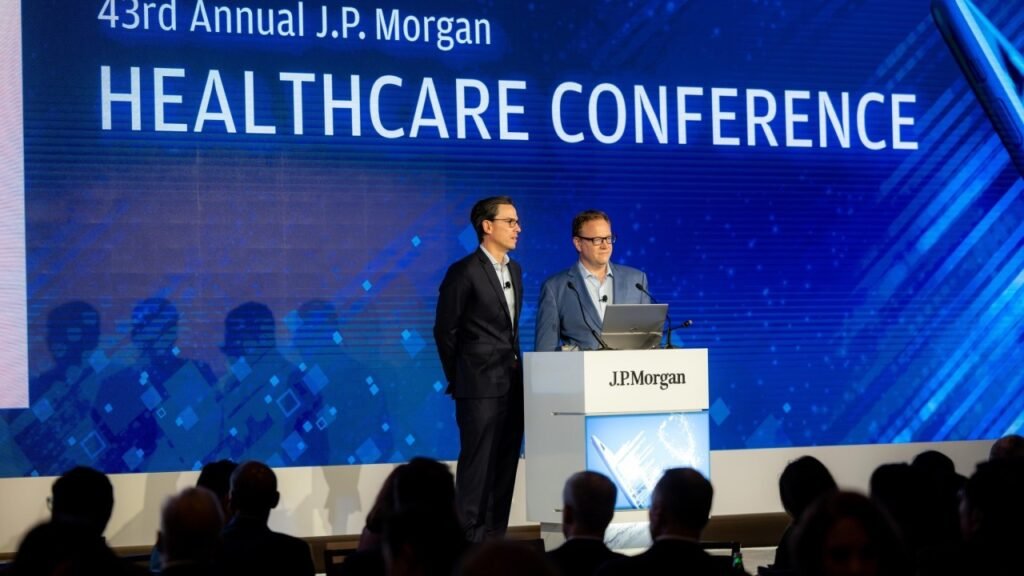Multiple clinical-stage biotechs unveil bold 2025 roadmaps—from Denali’s upcoming BLA for Hunter syndrome to Cabaletta’s expanding autoimmune cell therapy trials—signaling a year of strategic acceleration in rare diseases and immune interventions.
Multiple clinical-stage biotechs unveil bold 2025 roadmaps—from Denali’s upcoming BLA for Hunter syndrome to Cabaletta’s expanding autoimmune cell therapy trials—signaling a year of strategic acceleration in rare diseases and immune interventions.

San Francisco / South San Francisco / Cambridge / Philadelphia, 13 January 2025 – As the 43rd Annual J.P. Morgan Healthcare Conference gets underway, a wave of biotech leaders is laying out ambitious clinical and strategic agendas for 2025. Denali Therapeutics, Agios Pharmaceuticals, Cabaletta Bio, and Walden Biosciences each shared distinct priorities that, collectively, illuminate a dynamic year ahead in rare disease, therapy innovation, and immunology.
Denali Therapeutics (NASDAQ: DNLI)
Denali is gearing up to submit its first Biologics License Application (BLA) for tividenofusp alfa, targeting Hunter syndrome (MPS II), aiming to launch commercially in late 2025 or early 2026. Meanwhile, the company seeks FDA alignment on an accelerated approval path for DNL126, aimed at Sanfilippo syndrome Type A (MPS IIIA). These programs are part of Denali’s broader “TransportVehicle™ (TV)” platform, designed to deliver enzyme, oligonucleotide, and antibody therapies across both rare and common diseases.
This dual-pronged strategy underscores Denali’s ambition to transform rare disease care through both first-in-class approvals and platform-based expansion.
Agios Pharmaceuticals (NASDAQ: AGIO)
Agios is betting big on rare metabolic disease therapies. The company confirmed that its leading candidate, PYRUKYND, is on track for a commercial launch in 2026. Bolstered by a strong financial position, Agios plans to lever this success to advance its early- and mid-stage pipeline and broaden its therapeutic portfolio through to 2026.
This roadmap paints Agios as a company transitioning from R&D into commercialization, particularly in rare disease space where unmet needs remain high.
Cabaletta Bio (NASDAQ: CABA)
Cabaletta Bio reports encouraging progress in its RESET™ cell therapy program for autoimmune diseases. As of late 2024, 21 patients had been enrolled across 44 active sites in the U.S., reflecting strong momentum following presentations at ACR Convergence last November. With a growing clinical footprint and improved enrollment rates, the company is doubling down on its plan to bring “curative targeted cell therapy” for conditions like SLE, myositis, systemic sclerosis, and ocular myasthenia gravis.
Their structured execution across multiple indications suggests Cabaletta is a rising force in autoimmune immunotherapy.
Walden Biosciences
Walden, a private biotech focused on kidney disease, announced its 2025 clinical priorities in San Francisco. Their Phase 2 basket trial (WAL0921‑02), which targets diabetic nephropathy and rare glomerular diseases such as FSGS, TR‑MCD, IgA nephropathy, and membranous nephropathy, has completed enrollment of its second cohort. The company plans to begin the third cohort early in 2025 and roll out a first-in-human study of WAL0623, a novel small molecule dynamin stabilizer.
This advancement in both therapeutic category and trial scale demonstrates Walden’s growing maturity in rare kidney disease R&D.
Why These Updates Matter All Together
Together, these announcements reflect a vibrant and multifaceted clinical research ecosystem—one that blends regulatory strategy, platform technologies, therapeutic diversification, and execution scalability. Denali’s push toward accelerated approval and a BLA submission exemplifies rare disease companies’ focus on expedited pathways. Agios’s progression toward commercialization underscores the financial viability of metabolic disease innovation. Meanwhile, Cabaletta’s clinical expansion signals a shift toward complex cell therapy modalities in autoimmune indications. Walden’s trial strategy in kidney disease adds further depth, showcasing bold, multi-indication trial designs.
This collective momentum also highlights an industry increasingly adept at balancing technological innovation with real-world translational challenges—delivering hope not only through novel therapies but also through faster pathways and broader patient access.
Keep in touch with our news & offers